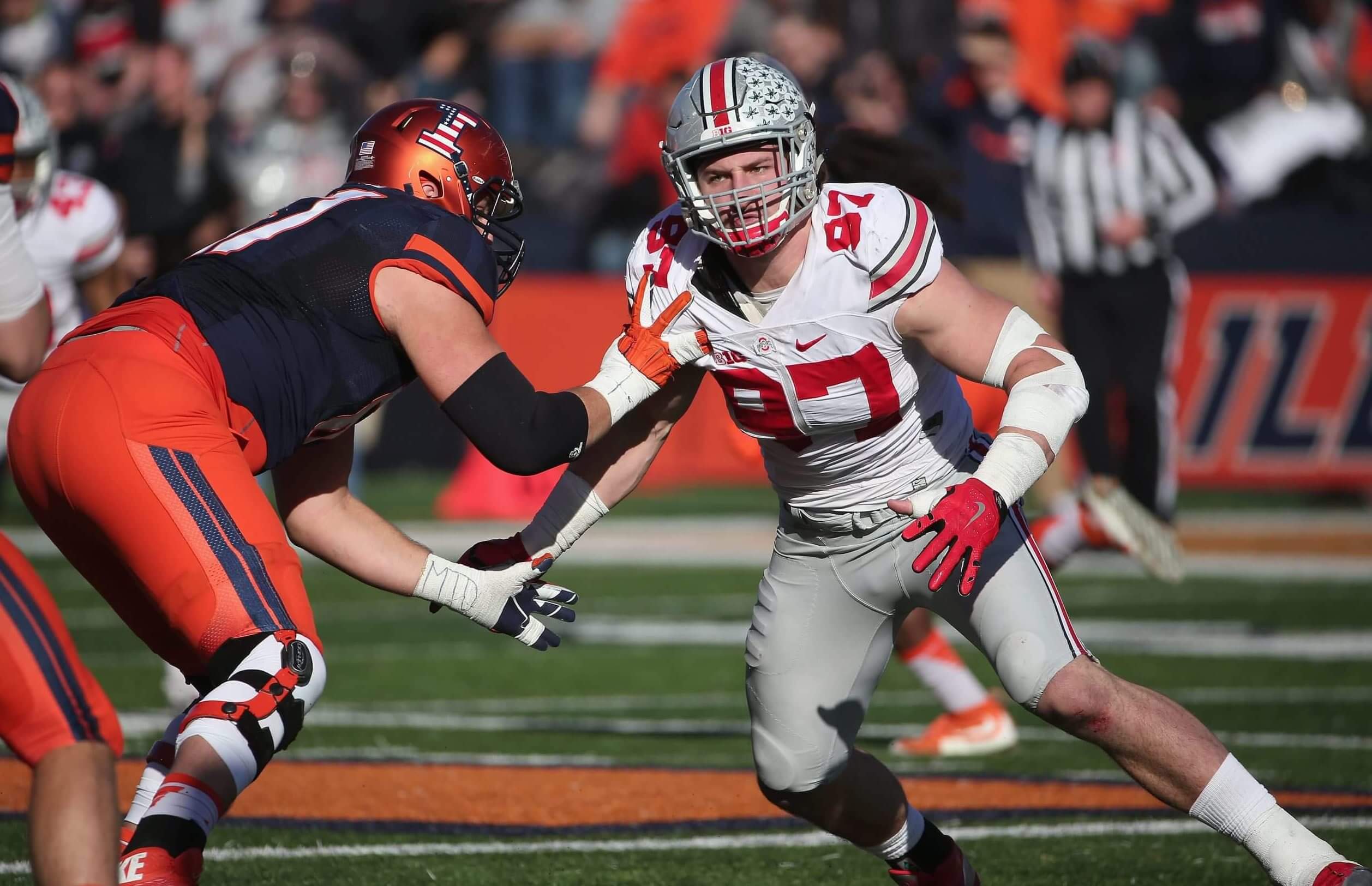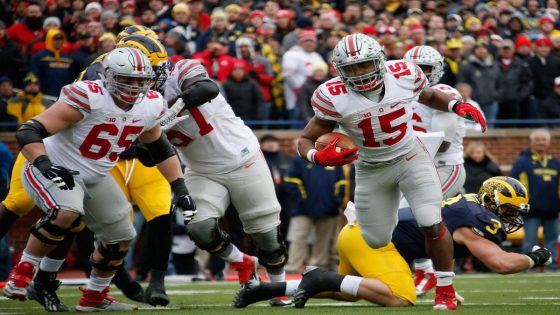As we inch closer to the inaugural 12-team College Football Playoff, it’s worth examining how some forgotten teams from the past would have fared if an expanded postseason had granted them new hope for a national championship.
Let’s examine five lower-ranked teams from the Bowl Championship Series (1998-2013) and four-team Playoff (2014-2023) eras that might have broken through a few higher-seeded teams. There’s a chance a couple of them could have reached a championship game.
All of these teams would have been seeded seventh or worse based on the current CFP parameters. For the BCS years, let’s assume a 12-team playoff format would have been structured to include seven conference champions (Big Ten, Big 12, ACC, SEC, Pac-10/12, Big East and highest-ranked non-BCS champ) and that the fields from the four-team CFP years would have included six conference champions (all but the Big East).
Here are five lower-seeded teams that would have made noise in a 12-team tournament.

Free, daily sports updates direct to your inbox.
Free, daily sports updates direct to your inbox.
Sign Up
2015 Ohio State (No. 7 seed)
The most talented and disappointing Big Ten team of the four-team Playoff era, 2015 Ohio State (12-1 overall, 7-1 Big Ten) entered the season as the unanimous No. 1 after winning the inaugural CFP in 2014. It returned three quarterbacks who won big games and even shifted one to wide receiver.
During the next two seasons, Ohio State produced 16 NFL Draft picks in the first three rounds, including eight first-rounders such as defensive end Joey Bosa, running back Ezekiel Elliott, tackle Taylor Decker and cornerback Marshon Lattimore, plus second-round receiver Michael Thomas. In 2015, the Buckeyes outscored their opponents by an average of 21 points per game and lost just one regular-season contest on the game’s final snap. Yet they finished seventh in the final CFP ranking.
So, what happened? Their play seemingly never matched their potential. In Week 3, the Buckeyes beat Northern Illinois 20-13. Two weeks later, they edged Indiana by a touchdown. They finally fell from No. 1 to No. 2 in early November after a 28-14 win against Minnesota. Then in the season’s penultimate week, they lost 17-14 to Michigan State on a 41-yard field goal. The Spartans were playing without starting quarterback Connor Cook, but the Buckeyes ran only 17 offensive plays in the second half and handed off to Elliott just twice after halftime. The play calling was just as baffling as the lack of execution.
Michigan State claimed the East Division and beat undefeated Iowa 16-13 in the Big Ten championship game to earn a CFP nod. After rolling Michigan 42-13, Ohio State was relegated to the Fiesta Bowl, where it beat Notre Dame 44-28. The nation’s most talented team never trailed in regulation yet failed to reach the CFP. It had legitimate championship potential, too.

2012 LSU (No. 9 seed)
Even by LSU standards, its 2012 roster was as NFL-laden as you’ll ever find. LSU was at the height of DBU with Tyrann Mathieu (at least early on), Eric Reid and Jalen Mills in the secondary. The wide receivers were led by Odell Beckham Jr. and Jarvis Landry with Jeremy Hill at running back. Up front on offense were La’el Collins and Trai Turner, while the defensive front seven had All-American Barkevious Mingo, Danielle Hunter, Kevin Minter and Kwon Alexander.
Despite all that talent, the Tigers beat only one SEC opponent by more than a touchdown. There are two different ways to take that statistic: One, LSU was tough, resilient and comfortable in close games. Two, the Tigers were too inconsistent at quarterback to win the big ones. In the Tigers’ first loss, they were held to 200 total yards in a 14-6 defeat at Florida.
In the game that decided the SEC West crown, the possible BCS championship qualifier and the potential national champ, LSU led Alabama by 3 points with 1:34 remaining before Alabama quarterback A.J. McCarron completed 4 of 5 passes on LSU’s defense, the final going 28 yards to T.J. Yeldon for the game-winning touchdown. The Tide went on to win the BCS title, while LSU reached the Peach Bowl.
With those athletes, that LSU squad would have matched up with any team in the country. In an expanded Playoff, the Tigers would have been dangerous.
1999 Michigan (No. 8 seed)
The Wolverines ranked eighth in the final BCS standings but were as dangerous as any team, including eventual champion Florida State. And with quarterback Tom Brady under center, Michigan was never out of any game.
In the opener against Notre Dame, Brady rallied Michigan in the final two minutes, culminating in a 1-yard plunge by Anthony Thomas for the victory. The Wolverines held NCAA all-time rushing leader Ron Dayne to 88 yards in a 21-16 victory at eventual Big Ten champion Wisconsin. Brady outdueled Purdue counterpart Drew Brees, who completed just 20 of 49 passes in a 38-12 blowout.
In the season’s most impressive win, Brady overcame three interceptions by running for a touchdown and throwing another inside the final 3:26 to stun No. 6 Penn State 31-27 in State College. Then in his last — and best — individual performance, Brady threw for 369 yards, four touchdowns and no interceptions in a 35-34 overtime win against Alabama in the Orange Bowl.
Two losses kept the Wolverines from reaching the top. At Michigan State, which was led by Nick Saban and finished No. 9 in the final BCS standings, Michigan trailed by 17 entering the fourth quarter. A three-touchdown rally cut the deficit to 34-31, but the Spartans ran out the clock for the win. The next week, Michigan led Illinois 27-7 before the Illini scored four touchdowns, including two inside the final three minutes, to win 35-29.
The Wolverines featured NFL receivers David Terrell and Marquise Walker, Pro Football Hall of Fame guard Steve Hutchinson and future Super Bowl champion defenders Larry Foote and Cato June.
2007 West Virginia (No. 9 seed)
One of the most electrifying teams in college football history, the 2007 Mountaineers were an imperfect representation of the 2007 season. They averaged 39.5 points per game and were ranked as the best team nationally in a rating system introduced by College Football Reference that combines strength of schedule and point differential.
With dual-threat Pat White at quarterback, running back Steve Slaton and do-it-all threat Noel Devine, West Virginia’s offense was unmatched. The Mountaineers cruised to the season’s final weekend ranked No. 2 after scoring 66 points on UConn. Then, in the Backyard Brawl, Pittsburgh somehow diffused West Virginia’s offensive machine. The Panthers, who finished 5-7 overall, held the Mountaineers to 183 total yards in a shocking 13-9 upset. West Virginia fell out of a BCS title matchup with Ohio State, giving two-loss LSU a ticket to the championship instead.
As the Big East champions, the Mountaineers accepted a Fiesta Bowl bid and faced No. 3 Oklahoma. Despite losing coach Rich Rodriguez, who took the Michigan job after the Pittsburgh loss, West Virginia’s offense played one of its best games with 525 yards in a 48-28 win over the Sooners and future Heisman Trophy quarterback Sam Bradford.
In the 2007 season, any of 20 teams could have won the national title. On the right day with the right matchup, West Virginia could have been one of them.
2000 Purdue (No. 12 seed)
Most teams seeded 12th in a hypothetical tournament during the past 25 seasons wouldn’t last more than a half against a quality No. 5 seed. The exception comes from way back in 2000 when Brees guided the Boilermakers to their only Rose Bowl appearance since 1966.
It was a wild year in the Big Ten with Purdue, Northwestern and Michigan all tied for the title at 6-2. Under Joe Tiller, the Boilermakers lit into opposing defenses with their version of an up-tempo pass-first offense. They were charmed that year with three of the most dramatic wins in program history — all in October.
Purdue trailed Michigan 28-10 at halftime before Brees led a furious rally that concluded with Purdue kicker Travis Dorsch’s 33-yard field goal with four seconds left for a 32-31 win. Two weeks later at Wisconsin, Craig Terrill blocked an overtime field goal attempt and Ashante Woodyard scooped up the ball and raced 64 yards for a touchdown in a 30-24 victory. One week later, Brees overcame four interceptions and threw for 455 yards while erasing a 10-point fourth-quarter deficit to beat Ohio State 31-27. Along with Michigan, Purdue also beat Northwestern to claim the head-to-head Big Ten tiebreaker.
The Boilermakers lost three regular-season games, so they were well beyond any BCS consideration and unranked in the final standings. But they did claim the Rose Bowl nod opposite Washington, which was No. 4 in the final BCS standings, and lost 34-24.
Brees finished third in Heisman balloting and was joined by longtime NFL veterans like offensive tackle Matt Light, defensive end Shaun Phillips and safety Stuart Schweigert plus lethal pass catchers Taylor Stubblefield and Vinny Sutherland. While it’s likely Purdue would have run out of juice to win a 12-team tournament, that squad would have made any team sweat, such as likely No. 5 seed Virginia Tech and quarterback Michael Vick.
(Top photo of Ezekiel Elliott (15): Gregory Shamus / Getty Images)





